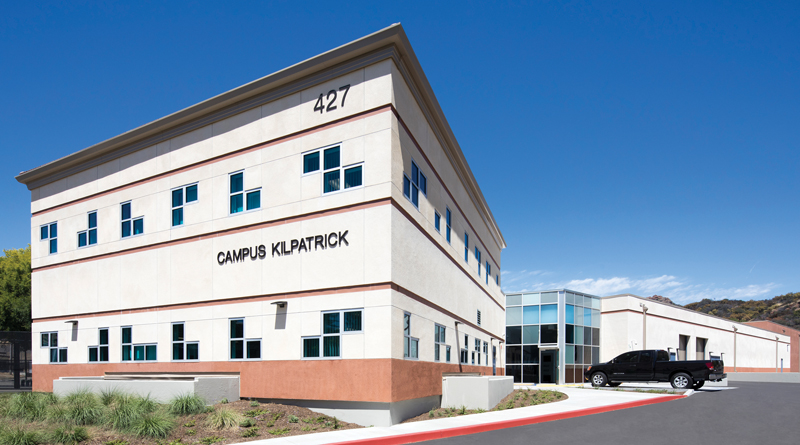The New Face of Justice: The Who Behind the What & How
By Darrell Stelling

Welcome to The New Face of Justice column. This is the place where we will explore the “who” behind the what and how we design, build and operate detention and corrections facilities across the U.S. Besides the unique needs of 11 million individuals admitted to county and other local jails every year, this column will focus on the following questions over the next several months:
• How are correctional facilities impacting the staff who work there and spend more time “behind bars” than the typical inmate?
• What are the latest methods of improving family dynamics using innovative interface options between inmates and their relatives?
• How are communities and people beyond the correctional walls improving both the incarceration experience and the programs to divert at-risk individuals into early prevention programs, with the goal of reducing recidivism rates and keeping juveniles out of the adult correctional system?
I will also share insights, knowledge and resources of other key experts who understand the human factors of those whose lives intersect the justice system in the United States.
The Swinging Pendulum
Over the past two decades, we have seen a significant shift in cultural attitudes about how and why we incarcerate individuals at an alarming rate far beyond most other first-world countries. In fact, according to the International Centre for Prison Studies (ICPS), we incarcerate almost half of the world’s prison population alone, even though our overall population is only 4 to 5 percent of the world population. But we are beginning to see this cultural attitude shift through legislation that minimizes sentences for non-violent crimes or provides alternatives to incarceration. With time, we can expect to see the rates of incarceration decrease.
Communities are realizing that fear of incarceration or stiff sentencing laws do not necessarily deter people from crime. The old-school attitudes of jails as places to warehouse and punish law-breakers only resulted in overcrowded conditions that created environments devoid of education or hope of returning an inmate to society as a better citizen. Thankfully, the pendulum is swinging away from the jail as a place of custody, control and punishment to a place of custody, care and programs for change. But we still have more work to do.
How do we know the pendulum is swinging to a more humane approach to corrections? We hear it not only in conversations with jail wardens, county commissioners and sheriff’s offices, but we also recognize it through organizational programs such as the National Association of County’s Stepping Up Initiative, started in 2015 to address inmates with mental health issues in a positive way. Nearly 400 counties across the U.S. have now passed resolutions to work to reduce the number of people with mental illnesses in jails. We see the change in the number of agencies looking for new and innovative spaces for their inmates with mental illnesses.
Changing the Conversation
Another sign pointing to this humanitarian shift in how we incarcerate offenders is seen in the types of questions we are asking agencies. In the past, agencies focused on designing jails based on maximizing the number of beds, the security systems and perhaps the method of supervision. These issues surfaced more as a budgetary concern rather than considering the long-term impact on human behavior. Today, we continue to work with clients to right-size a facility, but our conversations go far beyond the question of how many beds can we fit in this space? With a move toward a more rehabilitative justice model, we ask about an agency’s plans, programs and goals to reduce recidivism rates, and then, we consider the best practices in designing around those goals.

An example of this kind of dialogue is evident in the expanded educational spaces on par with any school district or community college, such as what we see at the MacLaren Campus for the Oregon Youth Authority in Woodburn, Ore., or the Los Angeles County Campus Kilpatrick.
We also see increased requests from counties and states to design specific parts of facilities, or full facilities, dedicated solely to medical and mental health inmates. In the past, we designed jails to incarcerate, and the medical and mental health programs had to fit within this environment. Today, our approach reverses that perspective, as seen at the Sonoma County Behavioral Health Housing Unit in Santa Rosa, Calif. There, the design priority rested on medical and mental health needs, and the incarceration requirement is a specific feature within this new model, not necessarily the primary deliverable.
Best practices and evidence-based design will play a leading role in the design of the future. There is little research on this updated model yet, so the newer designs will play a major role in determining its effectiveness. This new, more holistic approach to wellness incorporates natural light, outdoor views, calming colors and natural finishes, while still maintaining a secure environment. Additionally, newer facilities that focus on mental health include internal courtyards with landscaping and views from sleeping rooms. We are also taking into account the special population types, assuring properly sized units meet the unique needs of individuals housed in these spaces.
To read the entire article, check out the January/February issue of Correctional News.
Darrell Stelling, AIA, is the global sector leader for the Justice+Civic studio at national architecture firm DLR Group.

